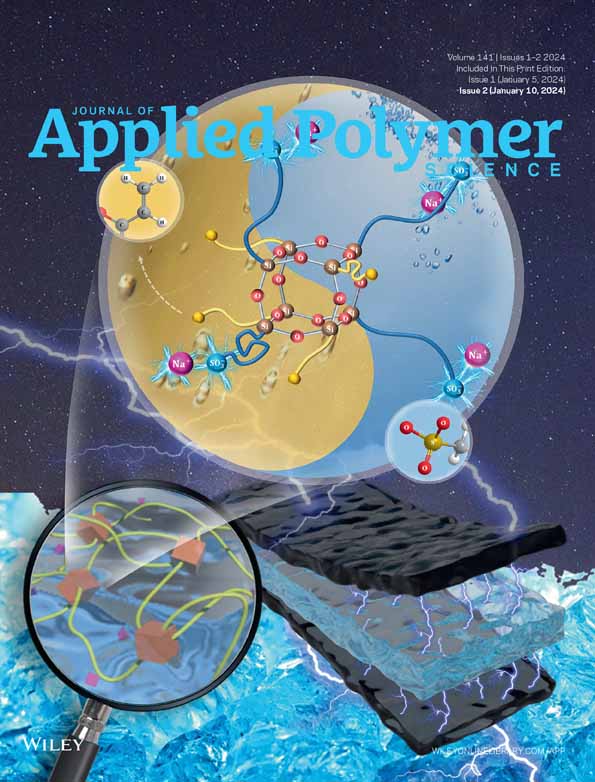Fabrication and characterization of 3D printable nanocomposite filament based on cellulose nanocrystals and polylactic acid using ionic liquids
Abstract
Nanocellulose, which is biodegradable and possesses excellent physicochemical properties, has high potential in many applications. However, its intrinsic hydrophilic nature makes it difficult to be used as fillers in most hydrophobic polymer composites. Here, cellulose nanocrystals (CNCs) were successfully prepared using 1-hexly-3-methylimidazolium hydrogen sulfate [Hmim][HSO4] ionic liquid under optimized conditions at 71°C, ultra-sonication amplitude of 69%, and ultrasonication time of 23 min. The prepared CNCs were surface-modified using 1-butyl-3-methylimidazolium tetrafluoroborate [Bmim][BF4]. A 3D printable nanocomposite filament containing CNCs embedded in polylactic acid was fabricated via extrusion process at 170°C. The prepared filaments were characterized using universal testing machine, field emission scanning electron microscopy, thermogravimetric analysis, and FTIR. It was shown that CNCs had a diameter and length of 10–24 and 60–400 nm, respectively. It was also found that incorporating 2 wt% of CNCs into the matrix phase increased filaments tensile strength by 2.5% (from 54.59 to 57.35 MPa) due to the plasticization effect of [Bmim][BF4]. The prepared composites exhibited lower activation energies compared to neat PLA due to the small traces of sulfate group on F-CNC. The mechanical attributes of CNCs/PLA nanocomposites were retained at values comparable to that of fresh PLA and were demonstrated to be 3D printable.
Open Research
DATA AVAILABILITY STATEMENT
The data that support the findings of this study are available on request from the corresponding author. The data are not publicly available due to privacy or ethical restrictions.




